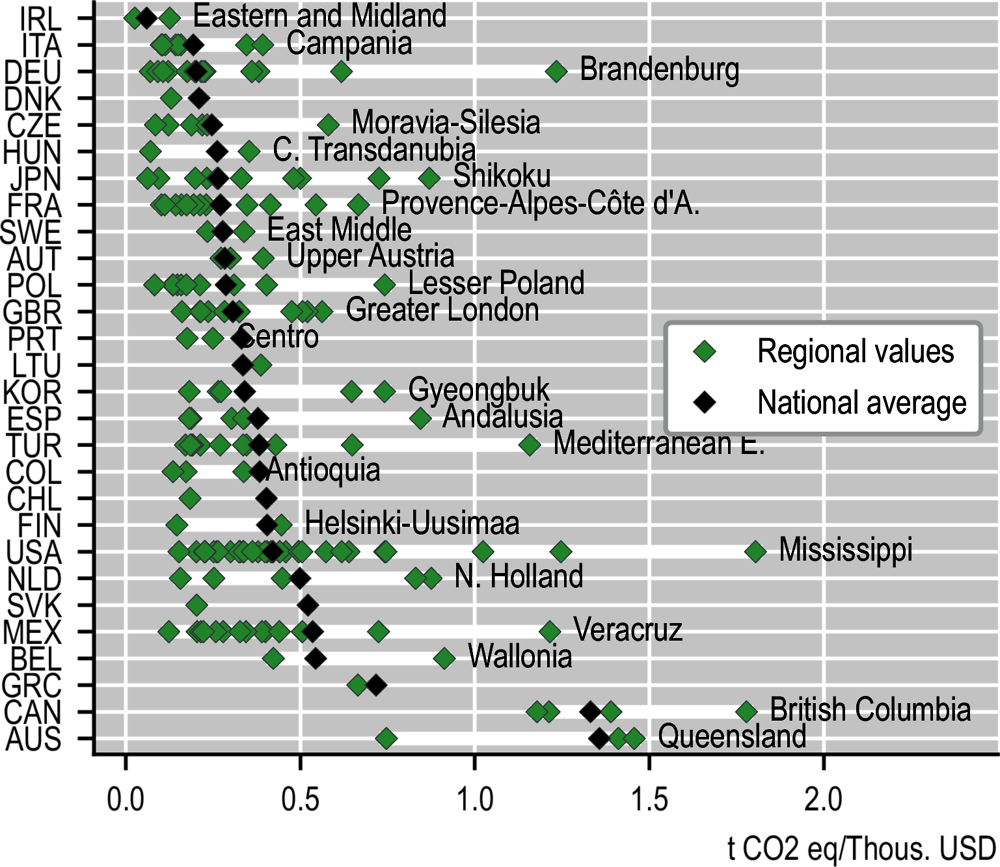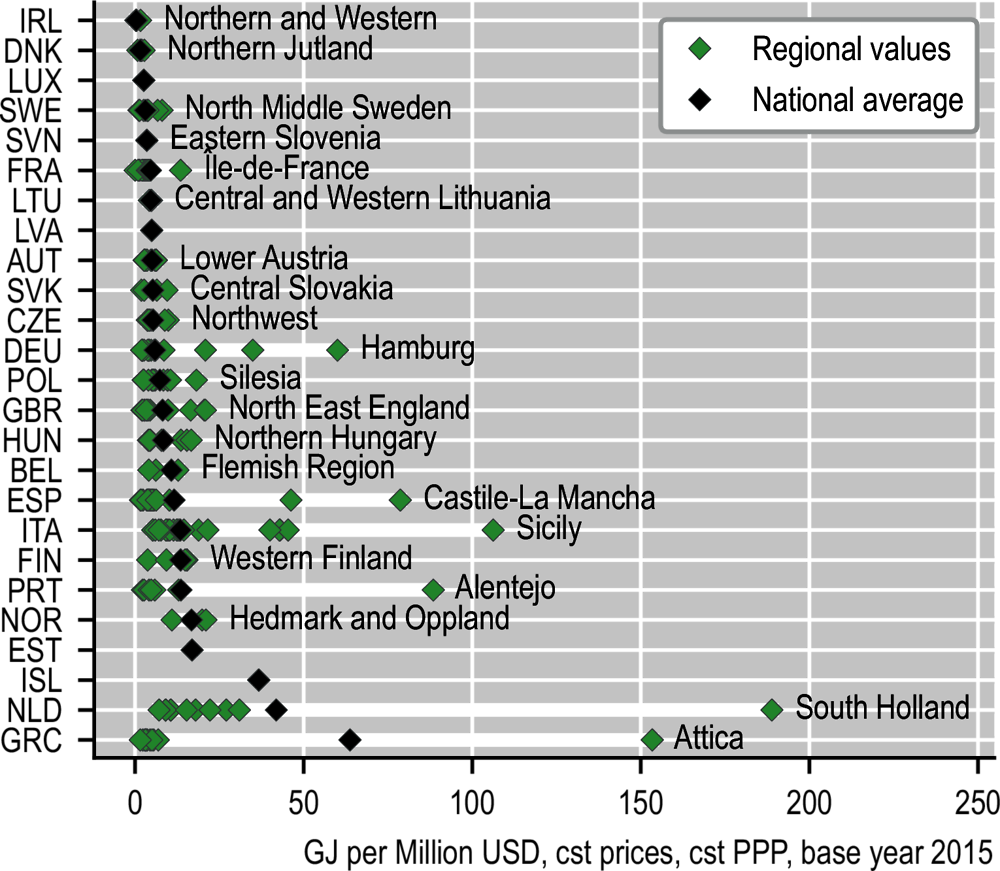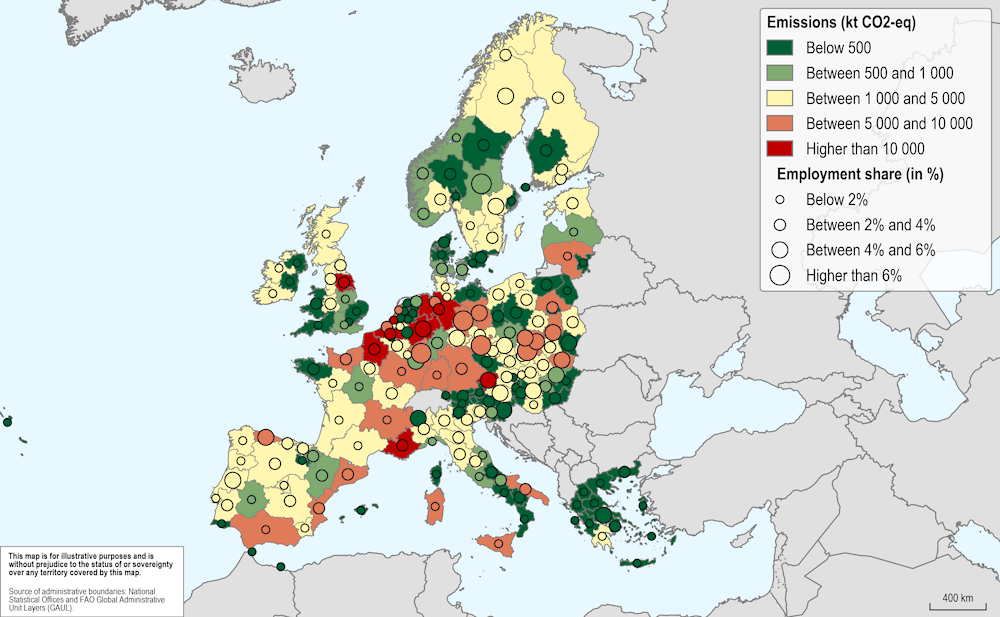Industrial regions will have to undergo deep transformations to meet climate neutrality goals.
In OECD countries, the manufacturing sector (including oil refineries and the transformation industry) is the third-largest contributor to territorial emissions after the energy and transport sectors, accounting for 20% of total emissions (Crippa et al., 2021), while accounting for 12% of total employment. With a 27% reduction in GHG emissions since 1970, manufacturing is the sector with the largest decline in emissions. This can be explained by a drop in employment driven in part by globalisation, as in many OECD countries manufacturing industries have been relocated offshore. Metropolitan regions experienced the largest decline in manufacturing emissions (-31%) but, in remote regions, they increased by 7%. Within the manufacturing industry, emissions are particularly concentrated in four specific sectors: the manufacture of coke and petroleum products; of chemicals and chemical products; of non-metallic mineral products (i.e. cement); and of basic metals (i.e. steel). In EU27 countries, these 4 sectors account for 80% of total manufacturing GHG emissions. These sectors can drive the differences in manufacturing emissions observed within OECD countries. For example, in the Netherlands, the manufacturing emissions per unit of gross value added (GVA) in the region of Zeeland are almost seven times higher than in Limburg. Although the manufacturing industry accounts for more than 20% of total GVA in both regions, emissions in Zeeland are particularly high due to the manufacture of chemicals and chemical products (Figure 2.14).
The transition to climate neutrality will affect more strongly regional economies with high employment shares in emission-intensive manufacturing sectors. In European OECD countries, the regions with the highest share of employment in the four most-emitting manufacturing sectors are Northwest (Czech Republic), Rhineland-Palatinate, Saxony-Anhalt (Germany) and North Middle Sweden, where such sectors account for around 7% of total regional employment (Eurostat, 2021). Emissions are particularly high in specific regions. For example, emissions in the four most-emitting manufacturing sectors are concentrated in Lower Saxony, North Rhine-Westphalia and Rhineland-Palatinate for Germany (OECD, 2022) (Figure 2.16).
The manufacturing sector also tends to be more energy-intensive compared to other sectors. In 2019, for OECD countries, manufacturing accounted for 18% of the total final energy consumption, 30% of natural gas consumption and 25% of electricity consumption (IEA, 2022b). Manufacturing industries heavily relying on energy are unevenly distributed within countries, making some regions’ economies more vulnerable to increases in energy prices. Within OECD countries, the most energy-intensive region consumes on average 16 times more energy per unit of GVA than the least energy-intensive region. This occurs as the most energy-intensive manufacturing sectors can be very concentrated in a few places. For example, in Greece, the Netherlands and Norway, most of the national employment in the manufacturing of coke and refined petroleum products is concentrated in one single region (Peloponnese, South Holland and Western Norway) (Figure 2.15).



